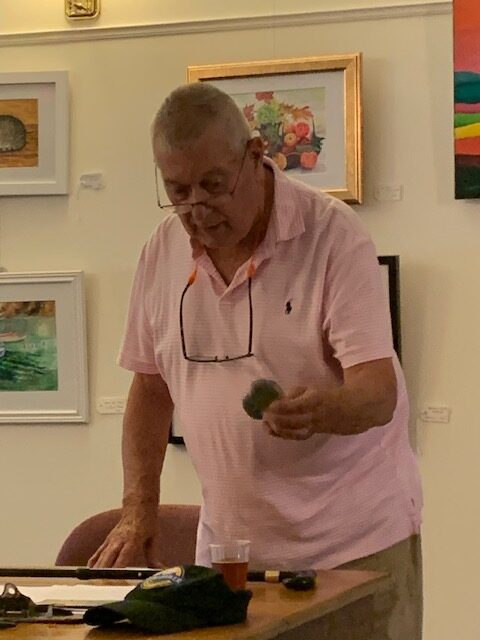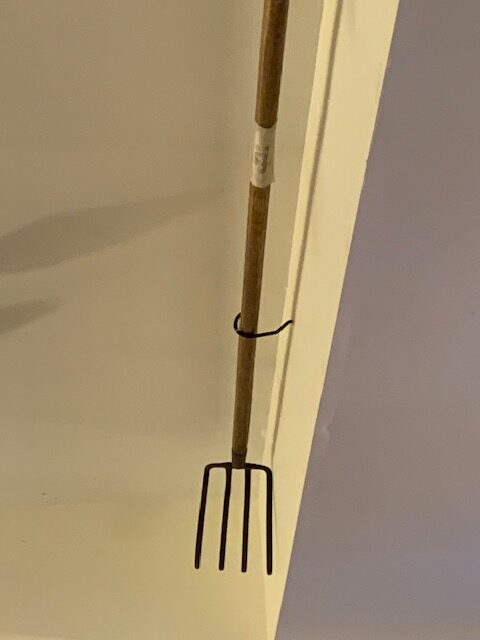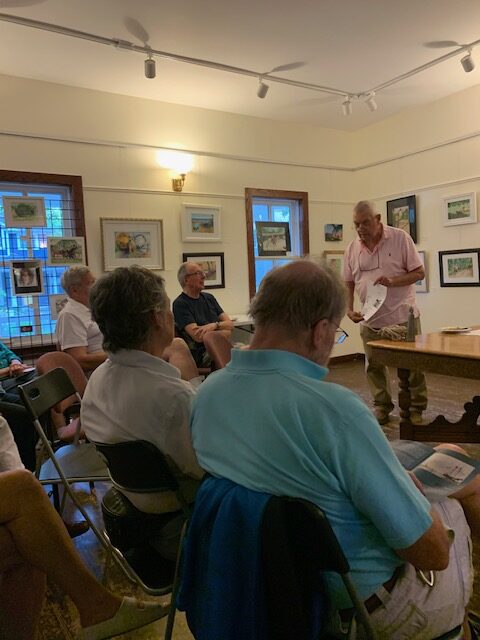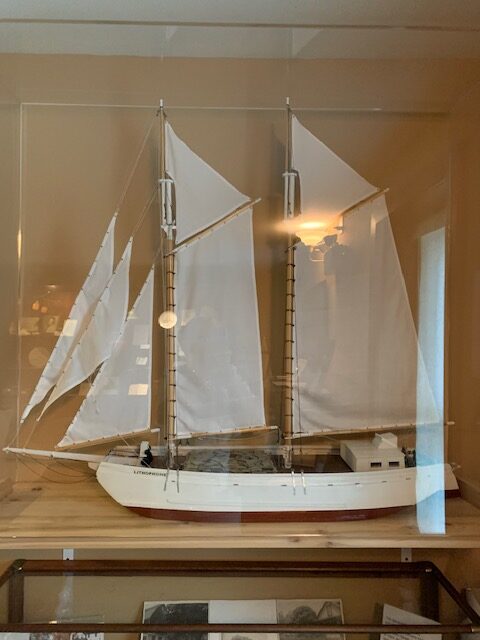EPISODE 859 EMILY BLOWER…FEMALE STONEHOOKER (SPEECH AT BRONTE HISTORICAL SOCIETY JULY 18, 2023
july 18, 2023Photo credits to Marjorie Skeoch“This little piece of fossilized shale is 450 million years old give ortake 30 million years, Ordovician shale from the bottomof the ocean seas that once covered great swaths of North America.Once upon a time it was mud. Pressure and time have createdshale. That shale is the subject of our discussion tonight”EMILY BLOWERIn 1867 Tom Blower suddenly died leaving his wife Emily with eight children, all under 16 years of age.There was no safety net for Emily. No insurance policy. No government aid as we have today.Emily was on her own and we can only imagine her fear for the family future she faced.There was one chance of family survival. Tom Blower was a stonehooker and owned theschooner Catherine Hays. I am not sure where Emily was living in Port Credit when Tondied but records reveal that Emily moved all eight children into the Cateirne Hays andfirst loaded split cordwood which she sold in the ‘Toronto market where the sttonehookersdocked at the foot of Bathurst Street.The payment were not enough to feed and clothe her family so she decided to becomea stonehooker. This was not an easy decision because stonehooking was physicallydemanding and dangerous. Just sailing a schooner full of shale from the shale bedsbeween Bronte and Port Credit was tricky. Some schooners like the Pinta were swampedin a sudden storm and crews drowned. (Bodies of the Quinn brothers were neverfound. The body of the third man was found frozen solid under the thwarts of the Pinta’s scow.(that happened in 1882 by rhen the Blower boys were adult stonehookers well aware of the dangers..)Emily was an unusual woman. Likely the only woman to become a stonehooker.The only reason we know about her decision to Stonehookers is becausestonehooking captain Al Hare of Port Credit made a comment about Emily thathas been passed from person to person and thereby entered the historical record.(Note: One of our guests lives next door to a Blower descendent. Perhaps a largerstory of Emily could be researched by maryanne Mason nd Bronte Historical Society.}Let me attempt to paraphrase Al Hare: “I remember seeing Emily Blower stonehooking in waist deepwater with her black skirt billowing with trapped air around her body while shedirected her eight children to do what they could do to help.” (These are words I havechosen but I believe are accurate…Alan SkeochWhy was Emily wading in waist deep water? There were three ways of gettingslabs of shale. First and the easiest was by quarrying slabs from the beachesalong the North shores of Lake Ontario. That was a tough job in itself madetougher by angry shoreline farmers who blamed stonehookers for erosion oftheir farm land. Eventually a law was passed that no stonehooker couldquarry or remove stone within 50 feet of the shore. So Emily and her childrenhad to operate in waist deep water to loosen and lift shale slabs.Emily may have even been forced to gather shale by the third method which wascalled “blind stavlling” in water six to eight feet deep. Often the water was cloudy and the bottom couldnot be seen so a long stonehooking rake was used whose tines could hookand lift pieces of shale. This seems to have been difficult so stonehookerspreferred the easier two methods.Lifting shale was tough work.1) from where shale rested to the little scow2) from the scow to the schooner deck or hold3) from the schooner to the bathurst Street wharf4) from the wharf to the horse drawn wagonsThen the empty stonehookers were often filled with horse manure for the return tripModel of the LithophoneSTONEHOOKING — A HARD LIFE … BUT A GOOD INCOMEEmily could support her family by hooking shale. As near as I can deterninethe stonehookng trade was profitable. If Emily could load just two cord-like ’tices’of shale on the deck of the Catherine Hays and then sail to the Bathuststreet Toronto wharf, she could sell the 3;x6’x12’ piles of shale for $5 each.Prices varied from low of $3 to a high of over $10 to Toronto builders for housefoundations)Suppose Emily got $10 for two piles of shale. That does not sound like muchmoney today.. i.e. the price of two cups of coffee. But it was good money inEmily’s time. In the year 1900, a $5 load of shale would be worth $183 today. (i.e. 2023)Two loads sold for twice that. Stonehooking was a good business in spiteof the dishevelled look of the stonehooking schooners with their raggedpatched sails and splintered unpainted decks. That income is Hard for me to believe. Maybe I am wrong.Emily’a boys became stonehookers and are the subject of one ofW. Sniders’ stories in his newspaper features called Schooner Dayspublished in the Toronto Telegram starting in 1931 when the stonehookingdays were over. At least one stonehooker was filled with straw andsoaked in kerosene before it was set alight as entertainment for Torontoniansat Sunnyside beach.Ross Noel and his wife are owners of the new Stonehooker Brewery and graciously provided samples of their productionfor our audience. Pleasure. I managed to down two samples. Marjorie downed 1.5 samples.Maryanne Mason hosted the evening and proudly displayed two Bronte artifacts…a stonehooking rake made by blacksmith Sam Adams anda model of the Lithopone, a stonehooker made famous when Walter Naish failed to attach the anchor chain to the stonehooker andthe ship floated away with the winter ice.Stonehookers took so much shale from the Lake Ontario shoreline that farmers fields and forests and one graveyard were eroded,Sovereign House in Bronte is very close to the shoreline as were some farm buildings in the 19th century. So eroded by stonehookers was PortCredit that loads of soil had to be dumped and then shielded with cement slabs to create Saddnigton Park. Stonehookers were not popular.

Alan's Oeuvre














